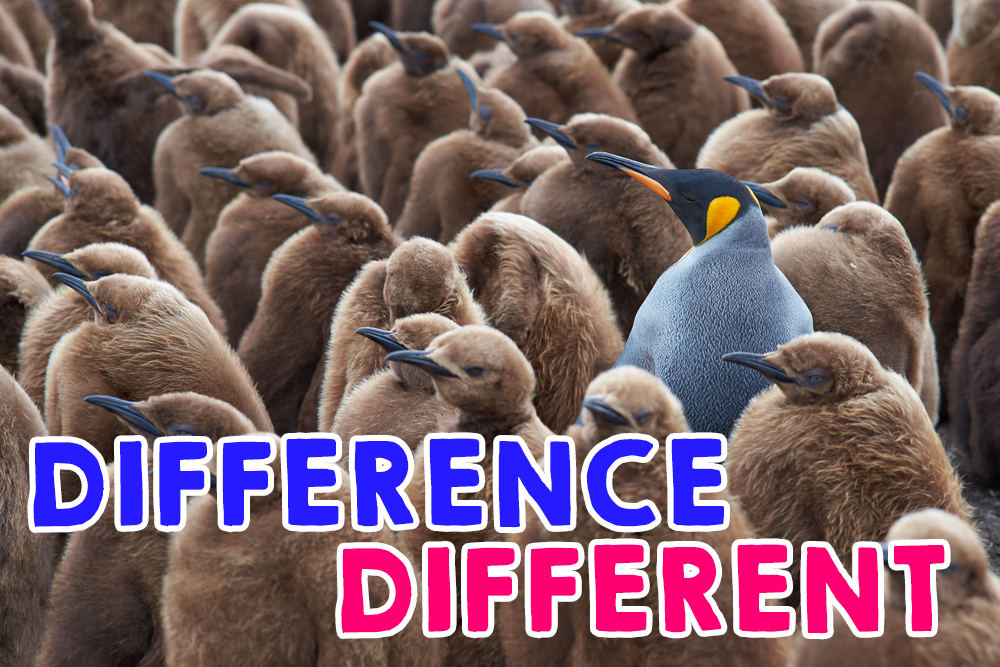Language is more than just a tool for communication; it’s a vessel for culture, identity, and connection. In an increasingly globalized world, families speaking multiple languages are becoming the norm rather than the exception. Whether born from migration, cross-cultural marriages, a desire to preserve heritage, or simply a passion for linguistic diversity, the "polyglot home" presents a rich tapestry of experiences. This article delves into the multifaceted world of different languages for family, exploring the profound benefits, the inherent challenges, and the practical strategies that enable these families to thrive, fostering deep connections and shaping unique identities.
The Tapestry of Multilingual Families: Why It Happens
The reasons behind a family’s multilingualism are as diverse as the languages themselves. At its core, it often stems from a blend of necessity, heritage, and choice:
- Migration and Immigration: Perhaps the most common driver, families moving to a new country often maintain their native language at home while adopting the local language for school, work, and wider social interaction. This creates a natural bilingual or multilingual environment.
- Cross-Cultural Marriages: When two individuals from different linguistic backgrounds marry, they inherently bring their languages into the family unit. Deciding which language(s) to speak and pass on to children becomes a central theme of their shared life.
- Heritage Preservation: For many, especially second or third-generation immigrants, there’s a conscious effort to reclaim and maintain an ancestral language that might be fading within the community. This is a powerful act of cultural preservation.
- International Careers and Lifestyles: Families working for multinational corporations, diplomatic services, or living as expatriates often find themselves immersed in different linguistic environments, prompting them to learn and use multiple languages.
- Personal Interest and Enrichment: Some families, without any direct migratory or marital impetus, simply choose to introduce additional languages into their home for the cognitive benefits, cultural exposure, or as a shared learning experience.
Regardless of the genesis, each family embarking on this linguistic journey faces a unique set of circumstances, opportunities, and hurdles.
The Unseen Threads: Profound Benefits of a Multilingual Family
The advantages of raising children in a multilingual environment, or of a family unit embracing multiple languages, are extensive and deeply impactful:
- Cognitive Advantages: Research consistently shows that bilingual and multilingual individuals exhibit enhanced cognitive skills. They often have better problem-solving abilities, stronger critical thinking, improved memory, and superior multitasking capabilities. The constant switching between languages acts like a mental workout, boosting "executive function" in the brain. Children raised with multiple languages tend to be more adept at focusing on relevant information and ignoring distractions.
- Cultural Enrichment and Empathy: Language is inextricably linked to culture. By speaking a language, one gains direct access to its literature, music, traditions, and ways of thinking. Multilingual families are often more culturally aware and empathetic, understanding different perspectives and worldviews from an early age. This fosters a broader, more inclusive sense of identity and belonging.
- Deeper Family Bonds and Heritage Connection: For families with immigrant roots or cross-cultural parents, sharing a minority language often means a deeper connection to grandparents, relatives abroad, and the family’s heritage. It allows children to communicate directly with elders who might not speak the dominant language, strengthening intergenerational ties and preserving a vital part of their family’s story.
- Enhanced Communication Skills: While it might seem counterintuitive, multilingual individuals often develop more nuanced communication skills. They learn to adapt their language and style to different audiences, demonstrating greater linguistic flexibility and sensitivity. They also tend to be better listeners, constantly processing and interpreting different linguistic cues.
- Practical and Global Advantages: In an increasingly interconnected world, fluency in multiple languages is a significant asset. It opens doors to more educational opportunities, broader career prospects, and richer travel experiences. Multilingual individuals can navigate diverse environments with greater ease, making them invaluable assets in globalized industries.
- Emotional Intelligence: Navigating multiple linguistic contexts often requires a heightened awareness of social cues and emotional nuances. Children who grow up code-switching or translating for others often develop a deeper understanding of emotional intelligence, learning to read situations and adapt their communication accordingly.
Navigating the Labyrinth: Challenges in a Multilingual Family
While the benefits are compelling, the journey of a multilingual family is not without its obstacles. These challenges require patience, commitment, and often, creative problem-solving:
- Communication Gaps and Frustration: In the early stages, or if language acquisition is uneven, there can be moments of misunderstanding or frustration. Children might struggle to express complex ideas in one language, or parents might not fully grasp a child’s feelings if expressed primarily in the dominant language. This can sometimes lead to communication breakdowns within the family unit.
- The Effort and Commitment Required: Maintaining multiple languages, especially minority languages, requires consistent effort from all family members. Parents must actively create opportunities for language use, find resources, and often resist the gravitational pull of the dominant language of their community. This commitment can be exhausting and feel like an uphill battle.
- Potential for Language Imbalance: It’s common for one language (usually the dominant societal language) to become stronger than the others. Children might resist speaking the minority language outside the home, or even within it, if they perceive it as "different" or less useful. This can lead to passive comprehension rather than active fluency.
- Identity and Belonging: For children, navigating multiple linguistic and cultural identities can sometimes be complex. They might feel "betwixt and between," not fully belonging to either culture, or struggle with how to present themselves linguistically in different social contexts. While ultimately enriching, this journey can have moments of confusion.
- External Pressure and Lack of Support: Family members, friends, or even educators outside the immediate family might question the practicality of raising children with multiple languages, or discourage the use of a minority language. This lack of understanding or support can undermine parents’ efforts and make the task more challenging.
- Code-Switching Misinterpretation: While code-switching (alternating between languages within a single conversation) is a natural part of multilingualism, it can sometimes be misinterpreted as a lack of proficiency in either language, or as a sign of confusion, especially by monolingual observers.
Crafting Your Family’s Language Policy: Strategies for Success
Successfully navigating the multilingual landscape often requires a conscious strategy. While every family is unique, several established approaches can guide parents:
-
One Parent, One Language (OPOL): This is perhaps the most well-known strategy. Each parent consistently speaks a different language to the child from birth. For example, one parent speaks only Spanish, the other only English. The child learns to associate each language with a specific person.
- Pros: Clear distinction, consistent input.
- Cons: Can feel artificial, one language might be weaker if the parent speaks the dominant language of the community.
-
Minority Language at Home (ML@H): In this approach, the minority language (or languages) is spoken exclusively within the home, while the children acquire the dominant community language through school, friends, and media.
- Pros: Ensures strong input for the minority language.
- Cons: Requires strict adherence, can be challenging if parents also need to use the dominant language at home.
-
Time and Place (T&P): Languages are used according to specific contexts, times, or activities. For instance, French is spoken during dinner, English during playtime, or one language is used for certain days of the week.
- Pros: Flexible, can integrate various languages.
- Cons: Requires consistency and might be harder for younger children to grasp initially.
-
Mixed Language Use / Code-Switching: This is a more natural, fluid approach where languages are mixed freely within conversations. While often frowned upon in older pedagogical models, modern research suggests that code-switching is a sophisticated linguistic skill and a natural part of multilingual communication.
- Pros: Reflects real-world multilingualism, less rigid.
- Cons: Might lead to a perception of "mixed" language rather than distinct fluency if not balanced with sufficient input in each language.
Key Principles for All Strategies:
- Consistency: Whatever strategy is chosen, consistency is paramount. Children thrive on predictable linguistic environments.
- Exposure and Input: Children need abundant exposure to each language, ideally from native speakers. This means reading books, watching age-appropriate media, listening to music, and interacting with other speakers.
- Need and Motivation: Children are more likely to speak a language if they feel a need for it. Creating situations where the minority language is necessary (e.g., to communicate with grandparents, for a special activity) is highly effective.
- Positive Reinforcement: Celebrate every linguistic effort, no matter how small. Make language learning fun and engaging, not a chore.
- Patience and Flexibility: Language acquisition is a long journey with ups and downs. Be prepared for periods of resistance and be flexible enough to adjust your approach if something isn’t working.
The Children’s Journey: Identity and Worldview
For children growing up in multilingual families, language shapes their very identity and worldview. They often develop a more expansive sense of self, capable of navigating different cultural codes and perspectives with ease. They learn early on that there isn’t just one way to name the world, fostering a natural curiosity and openness. While they may sometimes grapple with which language feels most "theirs," this process ultimately leads to a richer, more nuanced understanding of who they are and where they come from. They become cultural bridges, embodying the interconnectedness of our modern world.
The Spousal Dynamic and Wider Family
The linguistic journey also profoundly impacts the relationship between spouses. Deciding on family language policies, supporting each other’s efforts, and ensuring both partners feel their linguistic heritage is valued are crucial for marital harmony. For the wider family – grandparents, aunts, uncles – adapting to a multilingual environment can be a learning curve. Encouraging their participation, even if it means learning a few phrases, helps to reinforce the children’s language learning and makes all family members feel included.
Conclusion: A Gift of Immeasurable Value
Raising a family with different languages is undeniably a challenging endeavor, demanding commitment, creativity, and boundless patience. Yet, the rewards are immeasurable. It bestows upon children a profound cognitive advantage, a deeper connection to their heritage, a richer cultural understanding, and invaluable practical skills for a globalized future. Beyond the individual benefits, it strengthens family bonds, fosters empathy, and creates a unique, vibrant home environment where diverse voices are not just heard, but celebrated. The polyglot home is a testament to the power of language to unite, to enrich, and to shape individuals who are truly citizens of the world. It is a legacy of connection, understanding, and endless possibility – a gift that truly keeps on giving.


